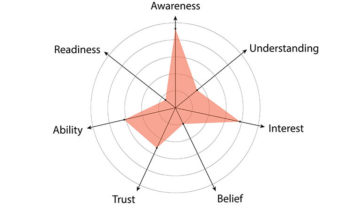The Lost Art of the Cold Call
Suddenly Stephanie, a managing director at PIE, remembered the LinkedIn profile of an executive she had been trying to meet. “I knew we could help him, so I had decided to cold call him.” She had left voicemails and sent occasional emails for more than a year, but he had been unresponsive. Now as students rushed the floor after the final buzzer, she turned to Dave and said, “He’s a Blue Devil.”
Make a Human Connection
In an age when computers are ubiquitous, it is easy to want to automate the selling of expert services. Software can have its place, but nothing replaces human contact. If you see someone you feel you can help, sometimes it just makes sense to just pick up the phone.
Let’s be clear here: Phoning someone you do not know can be scary. We would much rather publish a whitepaper on a subject and hope that customers beat a path to our door, but to rely on that as your only means of making new friends is crazy. Overcome the fear, find the phone number, and make the call — resolute in your belief that your experience can complement the experience of the person you are calling, and that together there is a least the possibility of creating value that each of you could not create alone.
The Method
Stephanie’s method to the lost art of the call:
Develop a thesis: What companies can you potentially help with your expert services?
Identify the role: Inside the company, what is the function you would be helping?
Find the person: Call into the switchboard, search online. Identify the name of the person you are trying to reach.
Call in through the switchboard: Leave a voicemail for the person you are trying reach. Most people don’t pick up their phones these days. Your job is to communicate that you are a human being and not a robot. Don’t sound too polished. Cold calling is not your full-time job. Tell them you must have missed them and that you will send an email.
Find their email: Look online. Look for email patterns in a company. Don’t be afraid to send several different email combos in the hope that one hits.
Keep your email short and ask for a call: Reference your voicemail. Try and reference something personal or points of intersection. Research what is happening in their lives or their companies. Don’t get carried away, though. Research can be a way to put off the call.
Double-check your email: This is your first impression. It is worth a second read before you press “send.”
Follow-through: Says Stephanie, “I am committed to appropriate follow-up.” The people you are trying to reach are very busy. What they have no time for today, they may have time for tomorrow.




